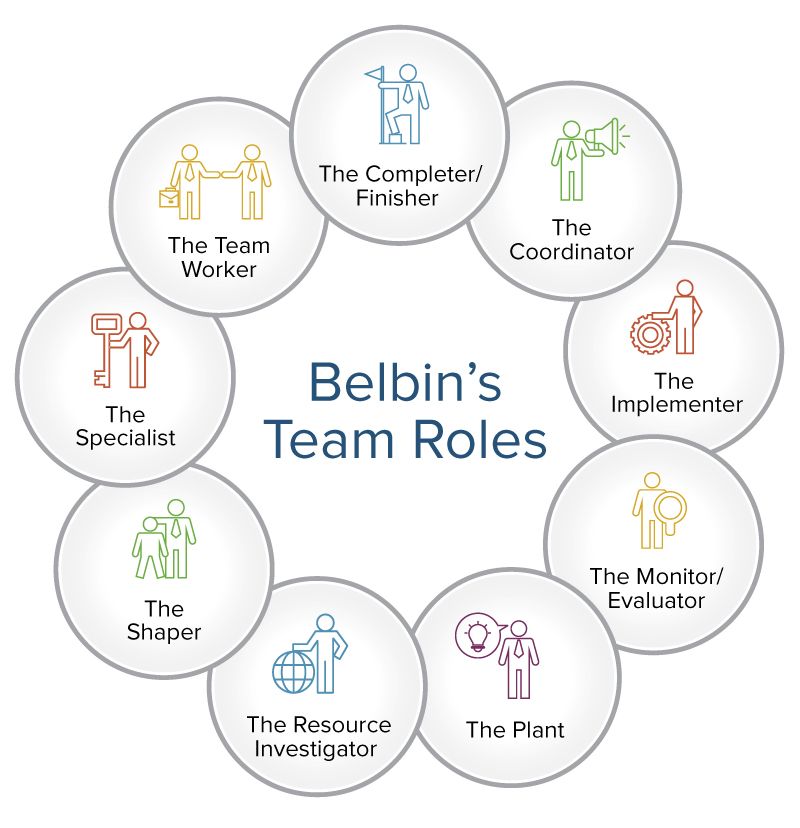Internview
For start-ups, hiring the right person is an essential job as the wrong team member may derail the growth of the company. By hiring the wrong person, time, money and resources are wasted trying to fit a square peg into a circle opening. Finding the right balance of team member experience, passion and vision is essential. If team members are super smart and experienced, but they don’t feel like sharing this knowledge due to a lack of alignment about the vision for the company, their knowledge is useless for the business.
As for EV Biotech, when the Founders looked to expand the team, a method to measure whether the new member would fit their desired criteria was needed. To facilitate the alignment of the role with interviewees, the Belbin test was used to determine whether the candidate would fit in with the growing team.
Belbin Team Roles
So what are the Belbin Team Roles? The Team Roles were designed to define and predict potential success of management teams, and look to bring balance by having a diversity of characters and personality types.
According to the Belbin website, an ideal team should have a healthy balance of all 9 team roles. Strong teams normally have a strong co-ordinator, a plant, a monitor evaluator and one or more implementers, team workers, resource investigators or completer finishers. A shaper should be an alternative to a co-ordinator rather than having both. In practice, the ideal is rarely the case, and it can be beneficial for a team to know which of the team roles are either over represented or absent and to understand individual’s secondary roles.

Results from the recent hires
Over the past year, the EV Biotech team has grown like a blossoming flower and the respective departments were able to recruit new members to help facilitate growth.
Interestingly, going over the results of the Belbin tests found that specific departments had core Team Roles that were pervasive across the new hires. Members of the Wet Lab team all shared the role of Completer and Team Worker, showcasing that working efficiently in the laboratory requires cooperation and a painstaking work ethic to ensure the experiments run smoothly. In addition, our team members demonstrated different core Team Roles to balance out how the work is undertaken.
Looking to the Business team, the Team Roles were more diverse than the Wet Lab team but demonstrated strong role as a Coordinator. As the Business team encompasses tasks involving business strategy, administration, business development and investor relations, the diverse skillset seen within the hires showcases the dexterity the team members add to tackle the challenges faced within the team.
As for the Dry Lab team, only two members have been hired in the past year but a strong inclination of being a Plant is apparent to the challenges facing the role. As the driver of our innovation, the Dry Lab team is tasked with facing complex challenges to ensure our pipelines are able to deliver our client requests. As such, providing creative and unorthodox solutions provide breakthroughs to optimise our pipelines and ensure our modelling is the pinnacle of development.
Moving forward
It should always be remembered that the tool helps to describe an individual’s ‘preferred’ team roles and is designed to indicate how you would ideally operate in a team environment. Strength in one team role is often at the expense of what might be seen as a weakness in another context.
Team roles tend to develop and mature and may change with experience and conscious attention. If a role is absent from the team, then it is often filled by someone who has not recognised this role as a dominant one. The team should share their team roles to increase understanding and enable mutual expectations to be met.
Having a team with different skill sets, backgrounds, and viewpoints means that you have more perspectives to draw insights from. And a more diverse team will also help your team members feel safer and more valued.